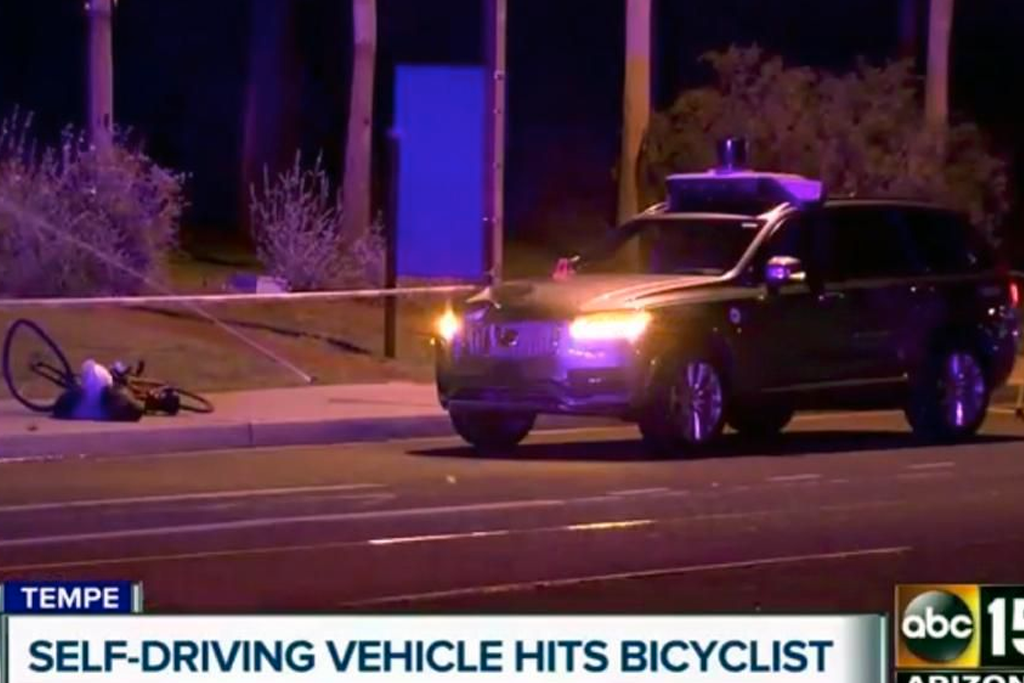One Of Uber’s Self-Driving Cars Just Killed A Pedestrian, Raising Urgent Questions
Are self-driving cars ready for roads? How do we know?

Overnight in Arizona, one of Uber’s self-driving cars collided with and killed a woman who was crossing the road. It’s believed to be the first death involving a self-driving vehicle and a pedestrian, though not the first death caused by a self-driving vehicle, and it’s reignited an uncomfortable debate about whether self-driving cars are ready for the roads.
Details of what exactly happened are still pretty thin. We know there was a person supervising inside the car — meaning they sit at the wheel ready to take over if there’s a problem — but their presence didn’t prevent the death. We also know that the pedestrian killed was 49-year-old Elaine Herzberg, who was crossing the road with a bike at the time.
Uber responded to the incident by suspending testing of its autonomous vehicles, and CEO Dara Khosrowshahi tweeted that “we’re thinking of the victim’s family as we work with local law enforcement to understand what happened”.
Some incredibly sad news out of Arizona. We’re thinking of the victim’s family as we work with local law enforcement to understand what happened. https://t.co/cwTCVJjEuz
— dara khosrowshahi (@dkhos) March 19, 2018
We don’t know whether the death was the fault of the self-driving car, or whether it would have been unavoidable even with a driver at the wheel. The incident has sparked an uncomfortable debate, though, about the many self-driving cars already on roads and whether they’re ready to be there.
And if this is the first time you’re hearing that self-driving cars are already on roads, consider this a pretty important heads up.
Self-driving car has killed its first victim. Who will be charged? … The programmers? The car? No one? https://t.co/bP08f4tG8P
— Mark Dice (@MarkDice) March 19, 2018
Quite a few cities in the US already have self-driving cars in on-road trials, and while in many cases these are strictly regulated, there have also been more than a few reports of tech companies rushing trials forward in an attempt to beat their competitors to various milestones.
In 2016, Uber was trialling self-driving cars in San Francisco without a permit. They argued that because there was technically a person behind the wheel, there was no need to acquire a permit (regulators disagreed, and after several cars were spotted running red lights Uber was ordered to take the cars off the road). Australia also has self-driving vehicles in trials on public roads, though not as many — in Perth, the RAC Intellibus has been running driverless since 2016.
And while today’s death is being described as the first of its kind, it’s important to note that it’s only the first pedestrian death involving a self-driving vehicle — in 2016, a passenger in one of Tesla’s autonomous vehicles was killed when the sensors failed to identify a semi-trailer crossing an intersection ahead, and the car drove straight through the trailer at high speed.
In the wake of today’s accident, many people are questioning whether driverless cars are actually ready for public roads. Proponents of driverless cars are arguing that they’re safer than having a person behind the wheel, but it can be hard to know whether to trust this when CEOs of companies developing autonomous vehicles have literally described the rush to get them on roads as “a race”.
As you hear a ton about this, remember that people die *all the time* from non-autonomous vehicles. The deaths per mile are already much lower for autonomous vehicles (nowhere near their safety peak) than non-autonomous vehicles (relatively close to their safety peak).
— Austin Wallace (@austeane) March 19, 2018
Anyone who thinks that Volvo, Uber, Tesla and everyone else in autonomous space are going to take every available prudent step so pedestrians and cyclists don't get killed by self-driving cars hasn't been paying attention to how auto industry has operated in the last 100 years
— Peter Flax (@Pflax1) March 19, 2018
what if . . . we put the same amount of time and money going into self-driving ubers into affordable, accessible, sustainable public transportation
just a thought
— Chanda Shuri Prescod-Weinstein??♀️ ?? ??♀️ (@IBJIYONGI) March 19, 2018
We’ll have to wait for the investigation into this case to actually know what went wrong. But the question on people’s minds right now is whether the “race” to develop self-driving cars will wait for that investigation, and whether we can trust tech companies who say they are.
